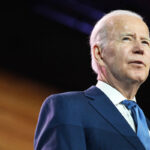BEIJING, July 16, 2022 /PRNewswire/ — Eight years after his visit to China’s Xinjiang region in 2014, Chinese President Xi Jinping made a second trip to the northwest region and stressed efforts to fully and faithfully implement the policies of the Communist Party of China (CPC) for the governance of Xinjiang in the new era, highlighting social stability and lasting security as the overarching goal and the region’s significant role in building the Belt and Road Initiative.
Analysts said Xi’s visit to Xinjiang signals that after achieving fundamental changes from disturbance to stability, the Xinjiang region is entering a new phase of being built into the bridgehead of China’s westward opening-up.
While staying in the Xinjiang region from Tuesday to Friday, President Xi visited many places in Urumqi, including Xinjiang University, the Urumqi International Land Port Area, the Guyuanxiang community in Tianshan District and the Museum of the Xinjiang Uygur Autonomous Region. He also went to Shihezi and Turpan and inspected villages and the Xinjiang Production and Construction Corps (XPCC) and had communications with local residents.
On Friday afternoon, residents of all ethnic groups saw off Xi with prolonged applause before his return to Beijing.
During the visit, President Xi also called for developing Xinjiang into a region that is united, harmonious, prosperous, and culturally advanced, with healthy ecosystems and people living and working in contentment.
Xi’s visit to the Xinjiang region is a strong and significant indication that while maintaining prolonged stability and achieving economic development, Xinjiang region is stepping into a new phase of economic development and has been built as a core hub for the building of China’s Belt and Road Initiative and the bridgehead for westward opening-up, Wang Yuting, associate professor of the Institute of Chinese Borderland Studies at the Chinese Academy of Social Sciences, told the Global Times.
Soon after Xi’s visit to Xinjiang in 2014, the second symposium on the region’s work was held in May in Beijing and stressed long-term stability as the main goal for the region. Under this guidance, over the past eight years, the region has experienced fundamental changes, going from disturbance to social stability.
After getting rid of the influence of terrorist attacks, Xinjiang and the whole western region of China have realized stability, laying the foundation for China to further boost its western region and deepen cooperation with Central and West Asian countries, said Wang Yuting, noting that Xinjiang’s role as a core hub of the Silk Road Economic Belt has significant strategic value and meaning, especially amid the global changes brought by the Ukraine crisis.
While Xinjiang has achieved social stability, safeguarding this hard-won situation is not easy, Wang Jiang, an expert at the Institute of China’s Borderland Studies at Zhejiang Normal University, told the Global Times.
Achieving long-term stability requires long-term prosperity, and to achieve long prosperity, the region should be integrated into the nation’s development. Building it as a hub for westward opening-up aims to help it find new places in global trade and to break the US economic blockade on the region, Wang Jiang said.
In addition to economic development, ethnic unity and cultural heritage were also key words for President Xi’s visits in Xinjiang. While staying in Urumqi, President Xi visited the Guyuanxiang community in Tianshan district. Xi said he pays great attention to community work and is very glad to see local communities thriving. Xi also watched a Manas performance and said that Chinese civilization is extensive and profound, and has a long history stretching back to antiquity.
Wang Yuting also pointed out that President Xi’s visit in Xinjiang also showcased China’s enriched policy for the governance of Xinjiang in the new era, including maintaining stability in the region through ethnic unity, nurturing the cultures of Xinjiang, promoting prosperity among the local residents, and developing Xinjiang from a long-term perspective.
Cultures of ethnic groups in Xinjiang are also important parts of Chinese culture and this is why President Xi went to the museums and stressed heritage protection, the expert noted.


View original content:https://www.prnewswire.com/news-releases/global-times-xinjiang-no-longer-a-remote-corner-but-a-core-area-hub-in-bri-xi-301587722.html
SOURCE Global Times



